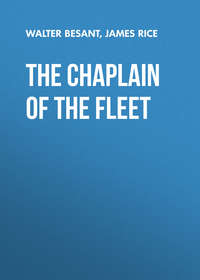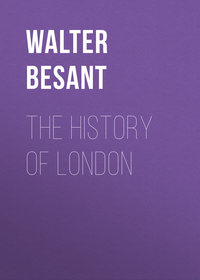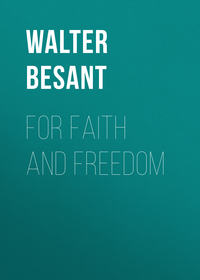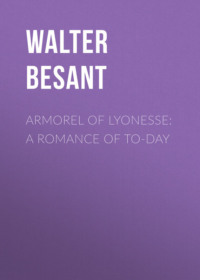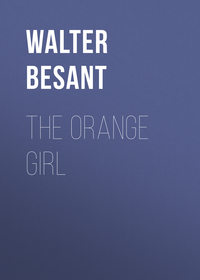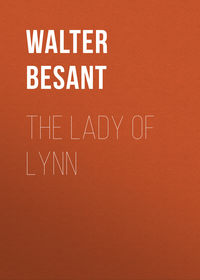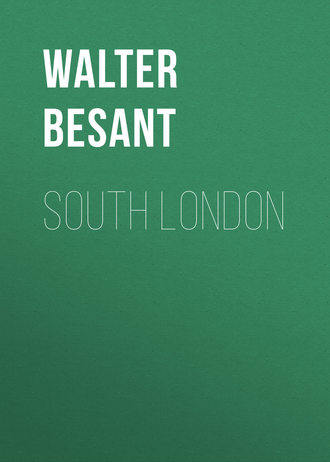 полная версия
полная версияSouth London
'On the daie of the Epiphanie at night, the Kyng with XI other were disguised after the manner of Italie, called a maske, a thing not seen afore in Englande; they were apparelled in garments long and brode, wrought all with gold, with visers and cappes of gold; and after the banket doen, these maskers came in with six gentlemen disguised in silke, bearing staffe torches, and desired the ladies to daunce; some were content, and some that knew the fashion of it refused, because it was not a thing commonly seen. And after they daunced and commoned together as the fashion of the maske is, thei tooke their leave and departed. And so did the Quene and all the ladies.'
When the Christmas festivities ceased, the servants packed up the gear: the napery, plate, gold and silver cups, dishes, pillows, curtains, tapestry and carpets. They were all laid upon waggons, the broad-wheeled creaking waggons which were dragged slowly over the uneven and heavy lanes by teams of horses or by bullocks. The queen and her ladies were carried in chairs or carriages, or went on horseback; the king and his followers rode; and so they went back to Westminster. The ferry carried over the heavy goods and the horses: the royal barges received the court. After them marched the whole rout – the two thousand archers without whom Richard never moved; the armies of servants; lastly, when the last procurable cup had been drained, the musicians and the mummers and the singers marched off sadly. A whole twelvemonth before another Christmas! They marched in the direction of the City, and that night, as they report, there was strange revelry in the inns of Southwark. The house was left in charge of a warden, who had with him the principal officers of the palace, the yeomen of the wardrobe, of the cellars, of the kitchens, and so forth; the organisation being kept up in readiness, though the king might not come back for years. This fact was illustrated a short time ago, when I was interested in watching the progress of a certain genealogy. About the year 1540 a certain younger son left his house; it was necessary to connect him with his own descendants. The link was found in the fact that this younger son had been received by Carey, warden of Hunsdon House, who made him one of his yeomen; a cheerless appointment, like a college in perpetual vacation, the warden and yeomen, representing the Master and Fellows, dining every day in the dismantled hall, and wandering about the empty courts and silent gardens. Palaces, like theatres, have their times of emptiness, during which it is best to keep out of them. For my own part, I think the true way of enjoying a palace is to frequent it as Froissart did: to hear all that was said and to put down all that was done, but not to be an actor in a drama which reeks of blood; not even the splendid mounting can destroy that dreadful reek. How many people are murdered about the court of England from Richard II. to Henry VII.? Richard murders his uncle, Henry IV. murders his cousin, Henry V. murders his uncle; Henry VI., it is true, murders no one, but then he lives in a time when there is a perpetual series of murders. What an awful time! Froissart, who looked on at part of the drama, achieved deathless renown for his history, while in the whole of that court there was no one whose head was safe on his shoulders except Froissart. Unfortunately, he says little about this palace which we are considering.
There are many names of kings and princes connected with this house of Kennington. Edward I. was here occasionally. During his reign it was the residence of John Earl of Surrey, and of his son, John Plantagenet Earl of Warren and Surrey. Plenty of histories could be made out of these and other names, had the writer time or the reader patience. In truth, the reader's patience is more to be considered than the writer's time, for the writer, at least, has the joy of hunting up names and notes and allusions, and of piecing together what, after all, his reader may not find of interest enough to carry him through. Edward III. made the manor part of the Duchy of Cornwall. After the death of the Black Prince the princess lived here with the young Prince Richard. I do not find that Henry IV. was fond of a house which would certainly be haunted – especially the room in which he was to sleep – by the sorrowful shade of his murdered cousin. Nor did Henry V. come here during his short reign. Henry VI., however, made use of Kennington Palace; so did Henry VII.; and the last of the queens whose name can be connected with the palace was Catherine of Arragon.
I do not know when the palace was destroyed. You have seen the place as it was figured in 1636, when it was only an ordinary square house. The plan was drawn when Charles I. leased it to Sir Francis Cottington. The destruction of the old house and the building of the new must have taken place during the hundred years between 1530 and 1630. When the new house was taken down I do not know.
The name that we especially associate with Kennington Palace is that of Richard II. When the Black Prince died, in 1376, Richard remained at Kennington under the care of his mother and the tutorship of Sir Guiscard d'Angle, 'that accomplished knight.' The young prince started with the finest possible chances of popularity. His father was not only the greatest captain of his age, but he was also, in the latter years of his life, on the popular side against the old King and his supporters; the boy was endowed with a singular beauty of person, and, when he pleased, with a sweetness of manner most unusual even among princes, with whom affability is the first essential in princely manners. In addition to this he was destined to show on two occasions courage which almost amounted to insensibility – first, when he dispersed Wat Tyler's mob, and next, when he seized the reins of government. History shows how he threw away all his chances in reckless extravagance.
After the death of the Black Prince it was resolved by the Lord Mayor to pay a visit to Prince Richard at Kennington, with a riding worthy of the City. The day chosen was the Sunday before Candlemas (February 2). One has frequent occasion to remark generally upon City pageants, that the people in these processions and their pageants were entirely regardless of winter cold or summer heat; they rode forth upon a pageant as cheerfully in the cold of February as in the sunshine of August. On this occasion, one hundred and thirty-two citizens on horseback, with trumpets and other musical instruments, and a vast number of flambeaux, assembled at Newgate in the afternoon, and marched through the City and over the bridge to Kennington Palace beyond the Borough. First rode eight-and-forty men in the habits of esquires – with red coats, say gowns, and vizards. Then followed the same number apparelled as knights in the same livery. Then rode one singly, a very majestic figure, who represented the Pope, followed by his four-and-twenty cardinals. They were followed by ten men dressed in black, with black vizards, representing legates from the Pope of Hell. This accounts for one hundred and thirty-two out of the whole number. The last man is not described. To them must be added pages and henchmen and whifflers, with men carrying the presents. This cavalcade, which gave the greatest joy to the citizens, all the way was followed by an enormous company of 'prentices and craftsmen and children, crowding after it and shouting. When it arrived at Kennington Palace they all dismounted and entered the hall, where they found the Princess of Wales, the young Prince, and their attendants, together with the Duke of Lancaster and other great lords. The court was first solemnly saluted by the masquers, who then produced dice and invited the Prince to play with them. Would you believe it? – every time the Prince threw, he won, which was in itself a remarkable circumstance. He carried off his winnings: a bowl of pure gold, chased and decorated; a drinking cup also of gold, and a gold ring. They then invited the Princess and the Duke of Lancaster and other nobles present, each of whom also won and carried off a gold ring. This done, the music played, and they were all invited to supper in the hall with the Prince and the Princess his mother. After supper, the tables were taken away – they were only planks laid on trestles and covered with white cloths – and the floor being cleared, the masquers had the honour of dancing with the royal party. Finally, at a late hour, the flambeaux were lighted, and the masquers rode home, well pleased with the reception they had met and the courtesy of the best behaved boy in the world.
In the same year occurred the great riot of London, which arose out of Wyclyf's trial in St. Paul's and the quarrel between the Bishop of London and John of Gaunt. The latter, after the dismissal of Wyclyf, repaired to the house of John de Ypres, close beside the river, where he was sitting at dinner when one of his following ran hastily to warn him that the people were flocking together with intent to murder him if they could. The Duke therefore hastily ran down to the nearest stairs, took a boat across the river, and fled as quickly as possible to Kennington Palace, where he took shelter with the young Prince Richard and his guardians. The mob, finding that the Duke was gone, made their way to the Savoy, his palace, threatening to burn and destroy all: they did actually murder one poor priest because he resembled the Duke in countenance; they were then persuaded by the Bishop of London to go home without doing any more mischief. What would have happened one knows not, but the death of the old King gave an opportunity of patching up the peace between the Duke of Lancaster and the citizens. Hearing that Edward was in extremis, the Mayor and Aldermen waited on the Princess of Wales and Prince Richard informing them of the King's critical situation, and beseeching the Prince's favour to the City; they also begged him to interfere for the better accommodation of the Duke's differences with them. It is pleasing to find that John of Gaunt freely forgave the City and became reconciled to the citizens; a reconciliation which paved the way to the subsequent popularity of his son Henry.
It might be argued that the various impressions as regards London produced on the mind of this prince explain his conduct towards the citizens when he grew older. The first experiment he had of the citizens was when they rode over in a goodly company clad in red cloaks with gold chains and finely appointed horses to visit him at Kennington: he remembered that their appearance betokened great wealth; that they tossed about gold cups as if they were of wood. This is a kind of impression which does not easily die away.
His second impression of the City was when his uncle, John of Gaunt, came flying from the City, having barely escaped with his life, the people having gone on to wreck, if they could, his palace of the Savoy. A turbulent and dangerous people, then, as well as rich; a people to be kept down.
He next saw the City when he rode through it on his way to be crowned at Westminster. All the way there was nothing but rich tapestry, carpets, scarlet, cloth, masquers clad in velvet, pageants with cloth of gold, and the streets filled with men and women dressed in rich furs and silks, such as only great barons could afford. This third impression confirmed the first.
His next impression was that of the City lying prostrate at the mercy of a large mob, unable to move or to help itself. He went into the City almost alone; he, by one single act of splendid courage, put an end to the insurrection. A City cowardly, therefore, and unable to act together. It was his City, moreover – the Camera Regis. Should not a prince do what he pleases with his own?
When we read of his subsequent treatment of the City: how he believed its treasures to be inexhaustible; how he believed that it had no power to resist; how he made the way easy for his cousin to supplant him, let us bear in mind the lessons which the Londoners themselves provided for him in his youth.
This King seizes on the imagination of all who think about him. His is one of the strangest of all the strange figures which crowd the National Portrait Gallery. Richly endowed with artistic instincts; a lover of music and all the fine arts; of singularly winning manners; the comeliest man in his whole kingdom; splendid in raiment, magnificent in his court, colossal in his personal pride, prodigal and extravagant beyond compare; the King whom those who knew him in his youth never ceased to love; for whose soul – not for the soul of Henry IV. – Whittington, for instance, left money for masses – this is a figure among our English kings which has no parallel.
One more reminiscence of Kennington Palace. The last occasion on which Richard lodged there was when he brought home his little bride Isabel, the queen of eight years. They brought her from Dover, resting on the way at Canterbury and Rochester. At Blackheath they were met by the Mayor and Aldermen, attired with great magnificence of costume to do honour to the bride. After reverences due, they fell into their place and rode on with the procession. When they arrived at Newington, the King thanked the Mayor and permitted him to leave the procession and return home. He himself, with his company, rode by the cross-country lane from Newington to Kennington Palace. I observe that this proves the existence of a path or lane where is now Upper Kennington Lane. At this palace the little queen rested a night, and next day was carried in another procession to the Tower. The knights rode before, and the French ladies came after. It is pretty to read how Isabel, with her long fair hair falling over her shoulders, and her sweet childish face, sat up and smiled upon the people, playing and pretending to be queen, which she had been practising ever since her betrothal. Needless to say that all hearts were ravished. The good people of London were ever ready to welcome one princess after another, and to lose their hearts to them, whether it was Isabel of France, or Katharine her sister, or Anne Boleyn, or Queen Charlotte, or the fair Princess of Denmark. So great a press was there that many were actually squeezed to death on London Bridge, where the houses only left twelve feet in breadth. Isabel's queenship proved a pretence: before she was old enough to be queen, indeed, her husband was in confinement; before she understood that he was a captive, he was murdered, and the splendid extravagant reign was over. The son of the usurper, young Harry of Monmouth himself, desired to take the place of Richard; his father also desired the match, for the sake of the dowry. Isabel, child as she was still, had the heart of a woman; she had learned to love her handsome, courteous, accomplished lord, who died before he could claim her; she refused absolutely to marry the son of his murderer. They tried to move her resolution by persuasion; they did not dare to force her: let us believe that Harry of Monmouth would not stoop to force the girl to marry him. There was nothing therefore left to do, but to send her home to what was certainly the most miserable court or palace in the world – that of her mad father. In the end, she married her cousin, the poet Charles of Orleans. You may read the verses which he made upon her death. Isabel died in childbirth in her twenty-second year. As for Harry of Monmouth, as all the world knows, he was obliged to content himself with Isabel's younger sister, Katharine; we have just read about that queen, and how she stooped to a suitor below her own degree. I think she was made of clay not so fine as that of Isabel, her sister.
2. ELTHAM PALACEThe second in our chain of suburban Palaces was the Royal House of Eltham, already mentioned in connection with Kennington. The place itself seems to have been a settlement of some kind, a town or village, in very ancient times. In the thirteenth century it was considered of importance enough to receive the grant of a market day every Tuesday, and a Fair for three days every year, namely, the day before the Feast of the Trinity, the Feast itself, and the day after. In the fourteenth century the market day was altered to Monday, but the Fair remained; in the fifteenth century the market day returned to Tuesday and the Fair was changed to three days on the Eve of St. Peter and St. Paul, on the Feast itself, and on the day after. The market and the Fair have long since been discontinued. The importance of both depended on the occasional presence of the Court, and when that was removed altogether from the place there was no longer any necessity for either market or Fair Day. Eltham then became a small agricultural village lying in the midst of woods, with nothing but scattered villages for many miles round. So long as it contained one of the recognised Palaces, even though years might pass by without a visit from the sovereign, there was, attached to the house, the permanent staff to a Governor or warder, with chiefs of the various departments and the men or assistants under them. The occupation of the Palace by such a staff gave the place a kind of garrison, and created a demand for provisions and for all sorts of things. On those rare occasions when the Court was actually in Residence at Eltham, the market had to furnish supplies, to which all the country round had to contribute; nothing short of provisions for the maintenance of thousands of people daily. At Eltham the difficulty may have been very great; no doubt word would be sent long beforehand if the King proposed to keep Christmas there. The yeomen of the kitchen had the beef put in the pickling tubs in November – vast quantities of beef, for, Christmas or not, the staple food of everybody in the winter was salt beef. At the Palace of Kennington things were easier. It lay within easy reach of the London market; so was Westminster. Greenwich was accessible by ships from the lower reaches of the Thames as well as from London. Eltham, no doubt, depended upon the rich and fruitful country in which it stood. At eight miles from London, the markets there were of very little use. The annals of the Palace are simple, rather than scanty; in fact, there is plenty of mention made of the Palace, yet very little of importance is recorded concerning it. All that is recorded of it belongs to peace and festivity and the season of Christmas. Eltham was given by William the Conqueror to his half-brother Odo, Bishop of Bayeux and Earl of Kent. After the disgrace of Odo, and the confiscation of his estates, the manor belonged partly to the Queen and partly to the Mandevilles. Thence it passed into the hands of the De Vesci family. From them it went to the Scropes, and from them to various holders in succession.
There was a Palace, or House, here of some kind in very ancient times. The historian says that he cannot ascertain when the Palace was built (see p. 74). Since the origin of the House is unknown, he argues that it must have been ancient. Now, concerning its connections with our Kings and Queens, there is quite a long list. All these lists would have to be catalogued, and even then be forgotten. For instance, the following list of visits I borrow from Lysons. But I cannot pretend that it is of much interest.
In the year 1270 Henry III. kept Christmas at his Palace of Eltham with the Queen and his nobles. After this the name of Anthony Bec, Bishop of Durham and Patriarch of Jerusalem, is connected with the place. He built a great deal, but I know not if any ruins of his yet remain. He died at Eltham in 1311, presumably in the Palace, for there seem to have been no other buildings. Now we come back to the kings, and we find historical associations in plenty, though not of a kind which is moving or interesting. It does not excite our curiosity much to learn that this king or that king kept Christmas here, and yet that is the kind of association which I have to offer. Edward the Second was often here: perhaps the seclusion of the place enabled him to play his favourite games with his followers without being overseen. One of his sons, John of Eltham, was born here. Edward III., when still under age, had a Parliament at Eltham in 1329. In 1347 his son Lionel kept Christmas for him at Eltham. In 1364 he entertained here the French king John, his prisoner. In 1375 he held another Parliament here, when the Commons petitioned him to make Richard, his grandson, Prince of Wales. Richard the Second, as we should expect, regarded Eltham with a peculiar affection; it was beautiful; the buildings were splendid. It was a long way from the City which took upon itself to remonstrate with his extravagance. Three times at least he kept Christmas here: on the last he entertained Leo, King of Armenia, with great splendour and profusion. Henry the Fourth kept Christmas four times in the Palace. On the first, the Aldermen of London and their children went down from the City to perform a masque before the King, who received it well. At that moment he was certain to receive everything well that came from the City. On his last visit the disease broke out which killed him. Henry the Fifth was here once, in 1414: Henry the Sixth once, in 1429. Edward the Fourth was a second Founder, so much did he add to the buildings. Among other things, he built a new front to the Palace and is said to have built the Banqueting Hall itself. His festivities rivalled those of Richard the Second. Here his daughter Bridget, afterwards a nun of Dartford, was born. Henry the Seventh was another builder: he stayed at Eltham often. Henry the Eighth came here once at least, but he preferred Greenwich as a residence as soon as that house was built. Elizabeth also came here only once or twice, preferring Greenwich, and James the First is only recorded to have visited Eltham once. After this time Eltham ceased to be a Palace. In 1646 Robert Earl of Essex died here1; the Manor was sold after Charles's death. After the Restoration it reverted to the Crown; the rest of the history concerns its occupancy by private families. On the death of Charles the Palace was surveyed; it is described as being built of brick, stone, and timber; it contained (see p. 74) one chapel, a hall, 36 rooms and offices below stairs, with two large cellars; and above stairs 17 lodging houses on the King's side, 12 on the Queen's side, and 9 on the Prince's side; and 78 rooms in the offices round the courtyard, which contained one acre of ground: the house was out of repair and uninhabitable. There were gardens attached to the house. A moat surrounded the house, of width 60 feet, except in the forest, where it was 115 feet. The moat still exists on the north side, and can be traced all round. Of the buildings little remains except the old Banqueting Hall, a truly beautiful ruin; the roof, with its fine woodwork, is happily still standing, but shored up and supported. The windows are mostly blocked up; fragments only remain of the other buildings; but it is said to be possible, in the gardens at the back, to trace out the courts and the foundations of the chapel and offices. The Palace is approached by a bridge of about the same date as the Palace, viz. the fourteenth century. It crosses the moat, and with its picturesque ivy-clad arches and the Banqueting Hall on one side, and the Court House on the other, it is as lovely an approach to the ruin as could well be imagined or created.
One of the last visits of the King to Eltham was in the year 1575, when Henry held one of the tournaments in which in his early manhood he so much delighted. This is Holinshed's account of it: —
'After the parlement was ended, the king kept a solemne Christmasse at his manor of Eltham; and on the Twelfe night in the hall was made a goodlie castell, woonderouslie set out, and in it certeine ladies and knights; and when the king and queene were set, in came other knights and assailed the castell, where manie a good stripe was giuen; and at the last the assailants were beaten awaie. And then issued out knights and ladies out of the castell, which ladies were rich and strangelie disguised; for all their apparell was in braids of gold, fret with moouing spangls of siluer and gilt, set on crimson sattin, loose and not fastned: the mens apparell of the same sute made like Iulis of Hungarie; and the ladies heads and bodies were after the fashion of Amsterdam. And when the dansing was doone, the banket was serued in of two hundred dishes, with great plentie to euerie bodie.'
There is little more to be said about Eltham, which is a place so beautiful that it ought to have a more interesting history. Kings and Courts delight me not, nor do I take pleasure in reading about tournaments and masques.


